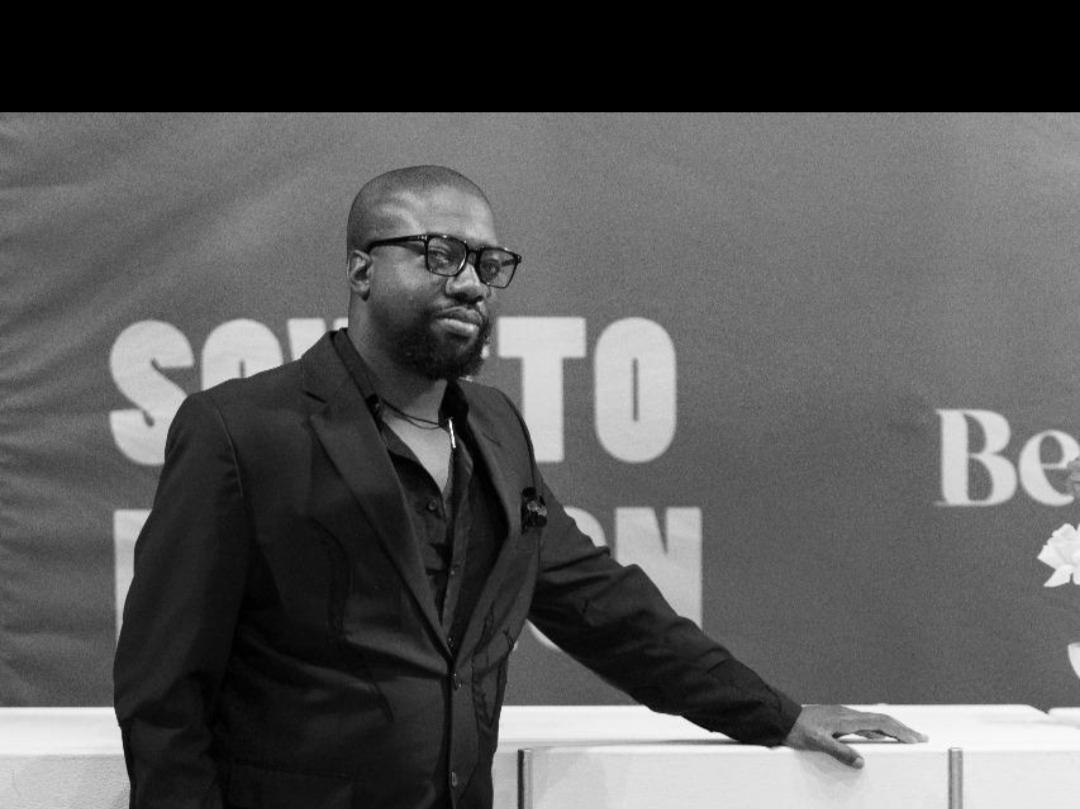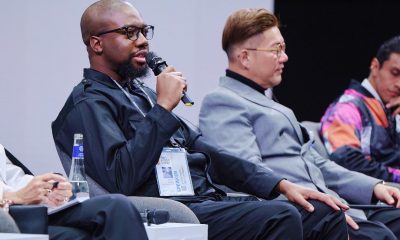Showbiz
South African Fashion Expands into Eurasian, Russian Markets

By Kestér Kenn Klomegâh
Organized by the Fashion Foundation with the support of the Moscow Government, the second Moscow Fashion Week was held from March 2 to 7, 2024. As part of the bilateral cooperation agreements signed at the BRICS+ Fashion Summit, directors of fashion weeks and councils from Brazil, Russia, India, China and South Africa, and new members, including Ethiopia, Egypt and UAE, were represented.
Generally, most designers are keen on creating routes for new business and focusing on cultural exchanges a step forward in exporting brands beyond the United States and Europe.
The Moscow Fashion Week attracted designers from Brazil, China, India, Indonesia, Turkey, Serbia, South Africa and other foreign countries, who had an excellent opportunity to showcase world-class brands with premium quality and long history to a wide audience and attract new buyers and customers. Designers and brand specialists used the chance to gain exposure and network with industry professionals.
The South African designers participated and presented their unique collections at the Manege Central Exhibition Hall.
Stephen Manzini, the organizer of the South African group’s participation in this spectacular grandest business event, is the founder and CEO of Soweto Fashion Week.
In this interview, Stephen Manzini offers his assessment and the importance of the Moscow Fashion Week and further emphasizes diverse fashion trends in the global markets. Here are the interview excerpts.
As the founder of Soweto Fashion Week, is it interesting to know the common sentiments among fellow Russian participants and other foreign designers during the recently held Moscow Fashion Week?
The current Moscow Fashion Week has been rebranded due to cities becoming global trendsetters. You will notice that all the big fashion weeks around the world are named after cities or towns (Soweto Fashion Week), hence, the rebranding from the Russian Fashion Week to Moscow Fashion Week.
It is my understanding that the sentiments are similar, and these include production challenges, costs of production, understanding and cracking foreign markets and differentiating between cultural and propriety in materials, as well as meeting business overheads at the end of each month.
What are your corporate views about potentials in South Africa for Russia, and in Russia for the South African designer industry?
Russia and South Africa have an excellent relations. Based on the existing cordial relations, I truly believe there’s great potential for both countries. The potential for South Africa in Russia includes access to an open and curious market. We bring our rich cultural background to the table, cultural materials, design, print and overall make which is very colourful based on tribal colours and inspiration. It’s something different for the curious fashions in Russia. It may be a niche market today B2C until with time it is tapped into the B2B economy.
Russia for the South African designer industry. I truly view it as a much easier transition. Our mainstream wear in retail stores is very much inspired by European apparel, if they can match the final price tags in the market, they should be able to make way in a short space of time B2B.
Have you anything to say about setbacks, challenges and policy blocs in penetrating the Russian and Eurasian markets? What are the popular complaints in the fashion industry?
One of the most popular setbacks, challenges and policy blocs include financial backing for South African design houses to expand into Eurasian and Russian markets. It is not only that; if you pay attention to the import-export index, it is mostly about importing to South Africa rather than exporting. Sometimes, little or too much leads to product dumping and fast fashion. The BRICS bilateral political agreements have made it easier and simpler for the removal or reduction of policy blocs to Russia and Eurasia.
Do you consider market competition and the changing corporate realities as challenges?
Of course, every business has to consider these factors. There are always bigger and international brands with advanced access to information or sometimes absorbing a traditional South African designer to get inside trade secrets on cultural propriety. This squeezes the emerging designer’s niche marking and forces them to close or better yet adapt and reinvent themselves. I reckon it is the same in Russia and Eurasian markets.
Do you think the media as part of a decisive factor in building effective cultural ties, including the fashion business, with Russia and South Africa?
Media is one of the decisive factors in my point of view. The media drives the narrative and paints a picture that makes ties desirable, it carries a message that will attract newer ties and build stronger current ones. Even more so in the fashion business which is driven by visuals that the media projects across the globe giving evidence and a track record of the ties.
From the above narratives, what measures or steps do South African designers together with Russian counterparts suggest for unlocking and tapping for cooperation?
The necessity to establish continual exchange until tangible results are realized. The goals we seek to achieve will not happen after a once-off attempt of continual media coverage, exchange, learning and adapting to each country and consumer needs. South African designers are all emerging in Russia and Russian designers are emerging in South Africa, this narrative alone suggests that there is a lot of work to be done and we look to achieve solid cooperation.
What other areas have you already identified, besides fashion, to engage in as part of fostering the scope of people-to-people gathering (public outreach) between Russia and South Africa?
I have identified a unique water purification process that caters for self-service or an intimate community which could work well in South Africa. The business of purified water is the future gold business in my viewpoint as we already have a shortage of healthy clean water in certain parts of South Africa. That’s another industry that needs to engage as a matter of urgent necessity.
Any wider possibilities such as the BRICS platform, both Russia and South Africa are members of this association?
As you may be aware BRICS (Brazil, Russia, India, China and South Africa) platform is expanding. That is the main focus at the moment, and emerging global markets are coming together to build for each other industries outside of Western Europe and the United States. It doesn’t get wider than that, in my point of view, as that is the future of the world.
Showbiz
Nigerian Actress Allwell Ademola Passes Away

By Dipo Olowookere
A Nigerian actress and producer, Allwell Ademola, has died at a hospital in Lagos, information reaching Business Post revealed.
She was said to have passed away on Saturday after she was taken to the medical facility for attention.
According to reports, she experienced a cardiac arrest was taken to a hospital in the Agege area of Lagos State, where she passed on.
Several of her colleagues in Nollywood have expressed shock over the sudden passing of the 43-year-old thespian.
Allwell Ademola is a relative of another popular actor, Muyiwa Ademola.
Showbiz
MTF’s Best Graduating Student Winner Achimugu Begins New York Film Academy NYFA Journey

Winner Achimugu, the MultiChoice Talent Factory (MTF) Best Graduating Student 2024, has embarked on a six-week scholarship at the prestigious New York Film Academy (NYFA). This achievement not only celebrates her exceptional talent and dedication but also reinforces MTF’s commitment to nurturing world-class African filmmakers ready to make their mark on the global stage.
Since its inception, MTF has been more than just a training ground; it’s a launchpad for African storytellers. Alumni from the academy have consistently demonstrated excellence, with films and projects winning awards, receiving grants, and gaining international recognition. Notable projects include 2070, which clinched Best Short Film at the African SDGs Film Festival, and Isekonu, a Zee World short film, officially selected for the Lagos Fringe Festival 2025 and nominated for Best Student Film at the Bayelsa International Film Festival.
These achievements reflect MTF’s ethos of equipping young filmmakers with both the technical skills and creative vision necessary to succeed, both locally and internationally.
The 2024 Best Graduating Student, Winner Achimugu, distinguished herself among her peers with a combination of talent, dedication, and storytelling finesse. Her selection for the NYFA scholarship is a testament to her hard work and to the quality of mentorship and training at MTF.
Through this program, she will engage in intensive workshops, hands-on training, and industry exposure that promise to elevate her craft. The scholarship is not just an award, it is a bridge connecting African storytelling to global cinematic opportunities, embodying MTF’s brand promise of fostering talent that transcends borders.
This scholarship opens new avenues for growth, offering exposure to international techniques, networks, and collaborative experiences that could define the trajectory of her career. For MTF, it’s a validation of its mission: cultivating a generation of filmmakers whose creativity, vision, and impact will resonate far beyond Africa.
As this journey unfolds, it reinforces the message that African cinema is on the rise, powered by storytellers who are ready to take their place on the world stage. With MTF alumni leading the way, the future of African filmmaking looks brighter than ever.
Showbiz
Quickteller Celebrates African Creativity in Lagos With InsomniaQ

By Modupe Gbadeyanka
A 12-hour non-stop entertainment event offering various performances and activities all night long will take place in Lagos from the evening of December 21 into the early hours of December 22, 2025.
This programme known as InsomniaQ, is being put together by one of Africa’s leading digital payments platforms, Quickteller.
Quickteller is a brand powered by the Interswitch Group, and InsomniaQ was created to celebrate African creativity.
The all-night music and entertainment experience will hold at the Ballroom of the Lagos Continental Hotel, Victoria Island.
It is designed to capture the vibrancy and cultural energy that define Lagos in December. InsomniaQ is positioned to become Africa’s newest must-attend December destination.
The concert blends diverse African soundscapes, creative expression, and immersive lifestyle experiences, offering a night curated for music lovers, diaspora returnees, cultural enthusiasts, and everyone drawn to the city’s festive season.
More than a concert, InsomniaQ represents a new cultural moment, one that celebrates the richness, depth, and diversity of African talent. With a lineup cutting across contemporary and alternative genres, the festival aims to introduce a bold, fresh, and unforgettable experience within Lagos’ already vibrant entertainment landscape.
“InsomniaQ is an invitation to celebrate African creativity in a way that feels bold, fresh, and true to who we are.
“Quickteller has always been an essential part of the experiences people value, and this festival brings that connection to life in an entirely new dimension.
“As Lagos welcomes friends, family, and visitors from around the world each December, we are proud to introduce a platform that showcases our music, our culture, and the vibrant energy that defines this season,” the Divisional Head of Growth Marketing for Quickteller Ecosystem at Interswitch, Mr Olawale Akanbi, noted.
Through Quickteller, Interswitch continues to champion initiatives that go beyond digital transactions to enrich the everyday life of millions of Nigerians.
InsomniaQ extends this mission by empowering cultural expression, unlocking creative opportunities, and supporting the continent’s growing entertainment ecosystem.
-

 Feature/OPED6 years ago
Feature/OPED6 years agoDavos was Different this year
-
Travel/Tourism9 years ago
Lagos Seals Western Lodge Hotel In Ikorodu
-

 Showbiz3 years ago
Showbiz3 years agoEstranged Lover Releases Videos of Empress Njamah Bathing
-

 Banking8 years ago
Banking8 years agoSort Codes of GTBank Branches in Nigeria
-

 Economy3 years ago
Economy3 years agoSubsidy Removal: CNG at N130 Per Litre Cheaper Than Petrol—IPMAN
-

 Banking3 years ago
Banking3 years agoFirst Bank Announces Planned Downtime
-

 Banking3 years ago
Banking3 years agoSort Codes of UBA Branches in Nigeria
-

 Sports3 years ago
Sports3 years agoHighest Paid Nigerian Footballer – How Much Do Nigerian Footballers Earn



















